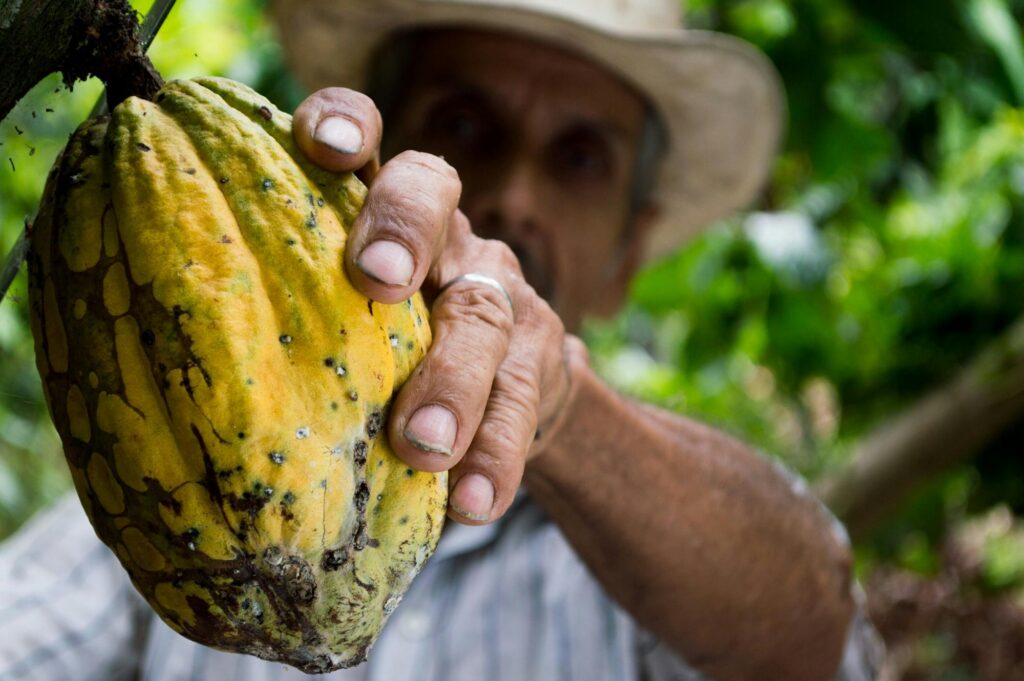The global cocoa supply chain is currently facing unprecedented challenges, leading to significant disruptions and price volatility. As a supply chain consulting firm, Noloss recognizes the multifaceted factors contributing to this crisis and offer insights into strategic responses for stakeholders.

Factors Contributing to the Cocoa Supply Shortage
- Adverse Weather Conditions and Climate Change: West Africa, responsible for over 60% of global cocoa production, has experienced severe droughts and unpredictable rainfall patterns. These climatic challenges have led to a 14% decline in global cocoa production during the 2023–2024 season, exacerbating supply constraints.
- Plant Diseases: The Cocoa Swollen Shoot Virus Disease (CSSVD) has devastated cocoa farms, particularly in Ghana’s Western North region, affecting approximately 81% of the area. This has significantly reduced yields and compromised the quality of cocoa beans.
- Regulatory Challenges: The European Union’s forthcoming regulations on deforestation-free products, set to take effect in January 2025, require stringent traceability measures. Many cocoa-producing countries are struggling to meet these standards, potentially limiting market access and further straining supply chains.
- Economic Pressures and Smuggling: Fixed cocoa prices in countries like Ghana and Côte d’Ivoire have led some farmers to engage in smuggling to neighboring countries offering higher prices. This undermines official export figures and disrupts supply chain integrity.
Market Implications
The convergence of these factors has propelled cocoa prices to historic highs, nearing $12,000 per ton in late 2024. This surge poses challenges for chocolate manufacturers, who must navigate increased production costs and potential shifts in consumer demand.

Strategic Recommendations
To mitigate these challenges and build resilience within the cocoa supply chain, we recommend the following strategies:
- Invest in Sustainable Farming Practices: Encourage and support cocoa farmers to adopt agroforestry techniques and disease-resistant crop varieties. These practices can enhance yield stability and reduce vulnerability to climate-related disruptions.
- Enhance Supply Chain Traceability: Implement robust tracking systems to ensure compliance with international regulations and improve transparency. Leveraging blockchain technology can provide immutable records of product origins, aiding in meeting the EU’s deforestation-free requirements.
- Diversify Sourcing Regions: Reduce dependency on West African cocoa by exploring and investing in emerging production areas. This diversification can mitigate risks associated with regional disruptions.
- Foster Collaborative Industry Initiatives: Engage in partnerships with industry stakeholders, governments, and NGOs to address systemic issues such as child labor, fair pricing, and environmental sustainability. Collective action can drive meaningful change and enhance the overall resilience of the supply chain.
Conclusion
The current cocoa supply crisis underscores the need for proactive and strategic interventions across the supply chain. By addressing the root causes and implementing sustainable practices, stakeholders can navigate the present challenges and lay the foundation for a more resilient and equitable cocoa industry.
References
Global chocolate supply under ‘real threat’ from virus: expert
Cocoa traceability rates fail to improve as EU deforestation law looms | Reuters
En Côte d’Ivoire, le secteur du cacao face au casse-tête des exigences environnementales de l’UE
![NOLOSS [SUPPLY CHAIN] CONSULTING](https://nolosssupplychain.com/wp-content/uploads/2025/03/cropped-cropped-cropped-Noloss_Logo-1-1-120x142.png)